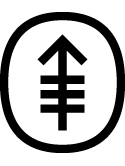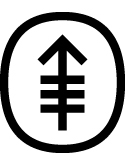Highly effective induction therapy for stage 4 neuroblastoma in children over 1 year of age Journal Article
| Authors: | Kushner, B. H.; LaQuaglia, M. P.; Bonilla, M. A.; Lindsley, K.; Rosenfield, N.; Yeh, S.; Eddy, J.; Gerald, W. L.; Heller, G.; Cheung, N. K. V. |
| Article Title: | Highly effective induction therapy for stage 4 neuroblastoma in children over 1 year of age |
| Abstract: | Purpose: To test the efficacy of a protocol for poor-risk neuroblastoma that builds on the following: (1) our favorable previously reported results with dose-intensive use of cyclophosphamide; (2) our retrospective analysis of neuroblastoma chemotherapy reports, which supported the value of high- dose cisplatin and etoposide (VP-16); and (3) the Goldie-Coldman hypothesis that rapid cytoreduction plus the use of non-cross-resistant chemotherapy combinations will decrease the risk of drug resistance. Patients and Methods: The N6 protocol included seven courses of high-dose chemotherapy plus surgical resection of bulk disease. Courses 1, 2, 4, and 6 consisted of 6- hour intravenous infusions of cyclophosphamide 70 mg/kg/d on days 1 and 2 (ie, 140 mg/kg per course), a 72-hour intravenous infusion of doxorubicin 75 mg/m2 and vincristine 0.1 mg/kg beginning day 1, and vincristine 1.5 mg/m2 intravenous bolus on day 9. Courses 3, 5, and 7 consisted of 2-hour intravenous infusions of VP-16 200 mg/m2/d on days 1 to 3 (ie, 600 mg/m2 per course), and 1-hour intravenous infusions of cisplatin 50 mg/m2/d on days 1 to 4 (ie, 200 mg/m2 per course). Courses were to start after neutrophil counts reached 500/μL and platelet counts reached 100,000/μL. Response was defined by international criteria. Results: Among 24 consecutive previously untreated patients diagnosed with stage 4 neuroblastoma at more than 1 year of age, 21 patients achieved a complete or very good partial remission; one patient had no evidence of disease except by iodine-131- metaiodobenzylguanidine (MIBG) scan, which was markedly improved; and one patient had resolution of extensive metastatic disease, but still had an incompletely resected primary tumor. The sole patient to have a poor response had clinical features at diagnosis that are atypical for neuroblastoma, namely, 8 years of age and an unknown primary tumor. Severe toxicities included myelosuppression, mucositis, and hearing deficits. Conclusion: The N6 approach reliably achieves significant cytoreduction against stage 4 neuroblastoma. This may eventuate in an improved cure rate, since consolidative treatments using myeloablative therapy, immunotherapy, or biologic response modifiers such as cis-retinoic acid are most likely to be effective against minimal residual disease. |
| Keywords: | child; clinical article; cisplatin; doxorubicin; dose response; drug efficacy; cancer staging; drug megadose; bone marrow suppression; etoposide; mucosa inflammation; cyclophosphamide; vincristine; drug resistance; infant; neuroblastoma; patient compliance; thrombocyte count; reliability; (3 iodobenzyl)guanidine i 131; hearing impairment; lymphocyte count; human; male; female; priority journal; article |
| Journal Title: | Journal of Clinical Oncology |
| Volume: | 12 |
| Issue: | 12 |
| ISSN: | 0732-183X |
| Publisher: | American Society of Clinical Oncology |
| Date Published: | 1994-12-01 |
| Start Page: | 2607 |
| End Page: | 2613 |
| Language: | English |
| DOI: | 10.1200/jco.1994.12.12.2607 |
| PROVIDER: | scopus |
| PUBMED: | 7527454 |
| DOI/URL: | |
| Notes: | Article -- Source: Scopus |
Altmetric
Citation Impact
BMJ Impact Analytics
MSK Authors
Related MSK Work











